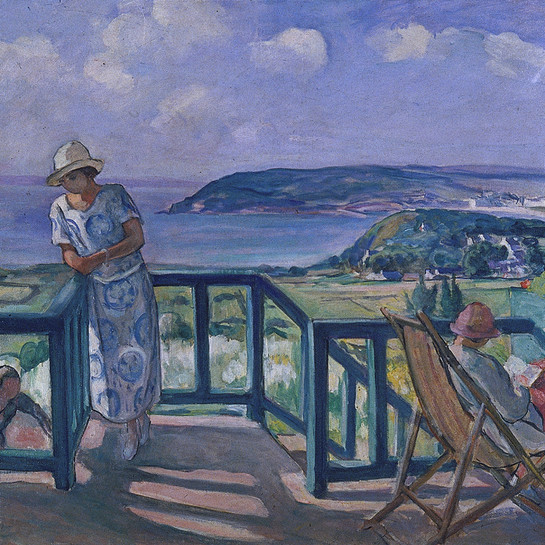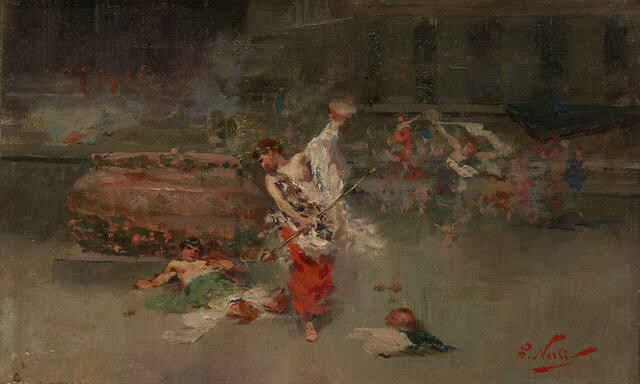Girolamo Nerli
Italy, b.1860, d.1926
Bacchanalian Feast
- c. 1887
- Oil on canvas
- Purchased, 1970
- 320 x 430 x 30mm
- 70/18
Tags: Classical, drinking, feasts, people (agents), realism (artistic form of expression), sleeping, wine
Named after Bacchus, the Roman god of wine, these feasts of classical Rome were known to be wildly drunken affairs. History painting, or taking subjects from the past, was popular with European painters of the late 19th century and was part of Girolamo Nerli’s formative academic training. This is one of five works he painted on the subject of these revels. Nerli was also influenced by the Italian Realists, the ‘Macchiaioli’ group of painters. This work is painted in a rapid, lively manner, which creates a sense of movement in the composition through the use of his distinctive bravura brush technique. Nerli was born in Siena and studied at the Academia di Belle Arti in Florence in the late 1870s. Having been in Australia, he arrived in Dunedin in 1889 where he exhibited at the ‘New Zealand and South Seas Exhibition’. Nerli opened his own art school and taught at Dunedin’s School of Art and Design. He left New Zealand for Europe in 1898 and subsequently died in Genoa.
Exhibition History
In the latter part of the nineteenth century there was a keenness among European artists for history subjects rendered with faithful accuracy to period costumes and settings.
This painting is one of five variants of the same theme painted by Nerli in the late 1880s while the artist was living in Sydney.
The incident depicted is taken from classical Roman history and reveals that Nerli also succumbed to the fashion, but it was a lapse that was not long held. His choice of subject may reflect the formative influence of his teacher Ciseri.
Nerli studied art at the Academia di Belle Art, Florence under Professor Ciseri whose early work was highly academic. Nerli later favoured the more avant-garde approach of the Italian Realists, the Macchiaioli, whose pictorial compositions were constructed of small areas of modulated colour and tone combined with the use of simple colour harmonies. All details were suppressed. This he applied to his own painting, enlivening the whole with his distinctive bravura brush technique.
After he settled in New Zealand in 1890, Nerli, by his example and teaching was able to influence many artists of a younger generation who were drawn to his free painterly approach, and advocacy of painting directly before nature.


